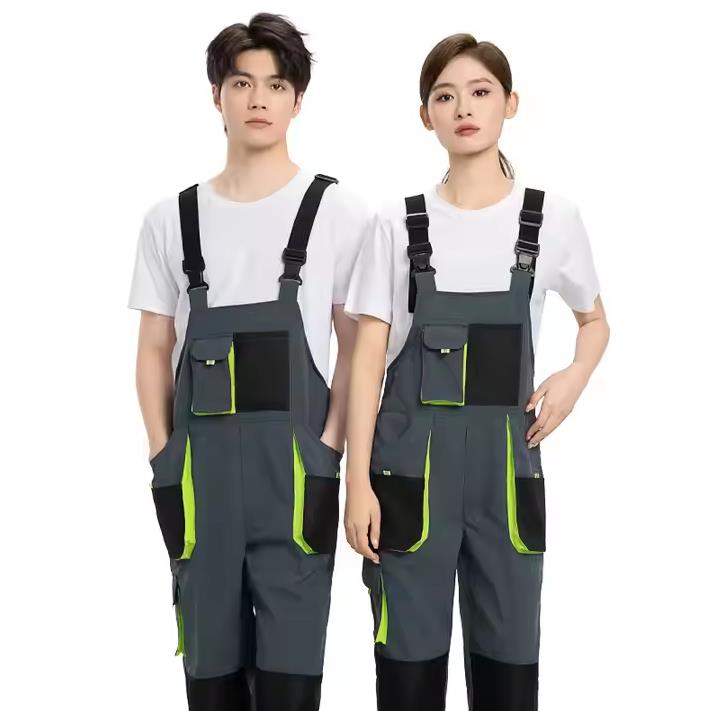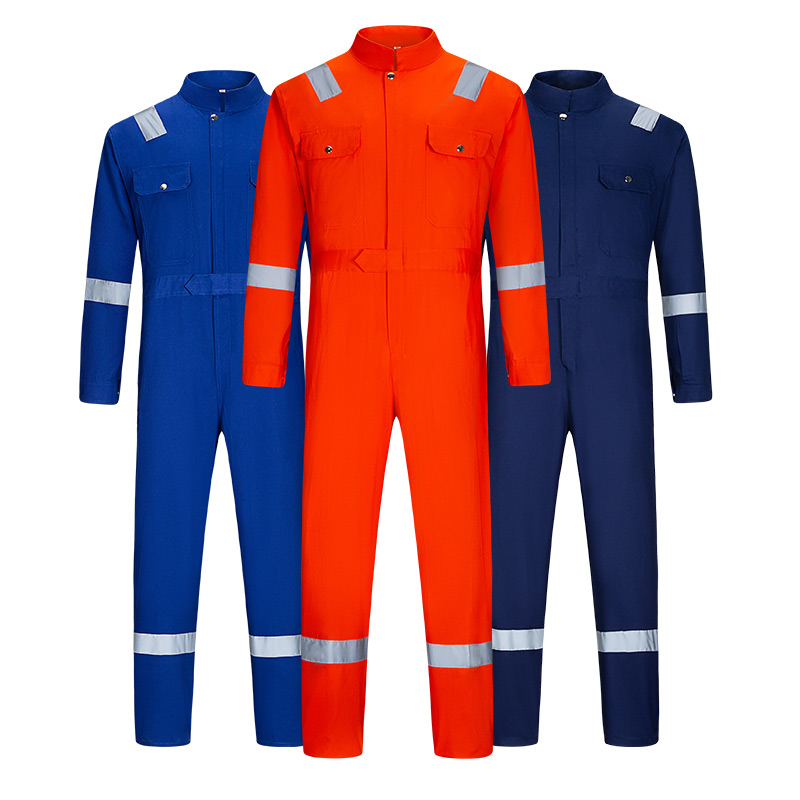Why do factory workers wear overalls?
Author:HAIYUAN TIME:2025-07-09Read:
Factory workers wear overalls (specifically bib overalls or dungarees) primarily for practicality, protection, and functionality in an industrial environment. Here’s why they’re a common choice: 
Ⅰ、Key Reasons:
1.Durability & Protection:
- Tough Fabric: Made from heavy-duty materials like denim, canvas, or synthetic blends to resist abrasion, sparks, grease, and chemicals.
- Chest/Belly Protection: The bib front shields the torso and clothing underneath from spills, debris, or sparks falling from above (e.g., welding, machining).
2.Tool Accessibility:
- Ample Pockets: Overalls feature large front pockets, hammer loops, and tool slots on the bib and legs, keeping tools within easy reach without bulk at the waist.
3.Comfort & Mobility:
- No Waistband: Shoulder straps eliminate tight belts/waistbands, reducing pressure when bending or crouching.
- Adjustable Fit: Straps allow workers to customize fit over layers (e.g., thermal wear in cold environments).
4.Clothing Protection:
- Acts as a shield, preventing everyday clothes from stains, tears, or damage. Workers often wear them over regular attire.
5.Safety Compliance:
- Some overalls meet safety standards (e.g., flame-resistant (FR) fabric for welding, high-visibility strips for low-light areas).
6.Historical Tradition:
- Overalls have been industrial workwear since the late 1800s, evolving from farmer/mechanic garb into standardized factory uniforms.
Ⅱ、When Coveralls Replace Overalls:
While "overalls" are common terminology, factories may opt for coveralls (full-body jumpsuits) if:
- Full-arm/leg protection is needed (e.g., chemical handling).
- Contamination risks require sealing off clothing (e.g., food processing, pharmaceuticals).
- Hazardous environments demand specialized materials (e.g., arc flash protection).

Ⅲ、In Short:
Factory overalls offer a balance of durability, utility, and comfort — protecting workers, extending clothing life, and providing easy access to tools. They’re a cost-effective, time-tested solution for light-to-medium industrial tasks, though high-risk settings may require full coveralls. Note: Terminology can vary regionally—some may call both garments "overalls," but functionally, bib-style dungarees dominate in factories.


